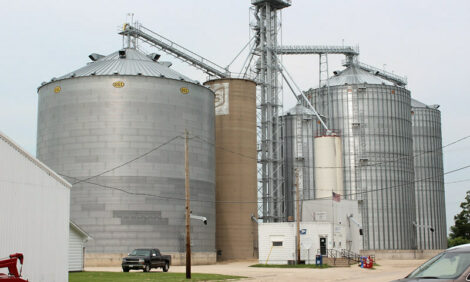



Market Preview: Anxiously Awaiting Hog and Crop Forecasts
US - Weekly US Market Preview provided by Steve R. Meyer, Ph.D., Paragon Economics, Inc.
Figure 1 shows the results of DowJones’ quarterly pre-report survey of market analysts regarding their expectations for the report. These numbers generally agree with my expectations. I believe (perhaps it is more hope than believe) that the breeding herd may be a bit smaller than this. I expect a 2% reduction based on both sow slaughter and gilt slaughter data from the University of Missouri.

I believe a few of these numbers are quite notable. First, analysts still expect the market herd to be significantly larger than last year. June slaughter has run 7.0% higher than last year when one compares the same number of weekdays and weekends. As usual, that number vs. the 180-lb. and over inventory will serve as an early checkpoint for the report.

Second, the March-May pig crop expectations are at +2%. If true, this means that we will not get much supply relief until 2009. Historically, we have had to adjust that number downward for death losses and upward for imports from Canada to arrive at an expected slaughter two quarters hence. The death losses should be much smaller, suggesting that fourth-quarter slaughter could be more than 2% larger. Imports of both market hogs and feeder pigs from Canada (See Figures 2 and 3.) have gone below year-earlier levels and, thus, suggest that fourth-quarter slaughter growth will be less than 2%. How those numbers balance will be important for fall hog markets.
Third, analysts see a larger reduction of output in the future as evidenced by the larger reductions in farrowing intentions. Those reductions, though, are slower than I expected given the feed cost situation we face.
High Futures Prices Aren’t Profitable
Which brings us to the elephant that remains in the room. Figure 4 shows cost and hog price projections based on Chicago Mercantile Exchange (CME) Group futures prices on June 23. These include those $99-plus Lean Hogs futures prices for next summer and note that they do not cover costs. While that purple line representing projected hog prices appears pretty close to the red cost line, readers must look at the vertical distance between them to estimate losses per cwt. of carcass – and that difference is significant. A 200-lb. carcass will incur losses of $25.10 in June, $34.28 in September and $40-plus in October and November. If you sell one pig per month at these costs and prices through May (i.e. those June Lean Hog futures prices impact May more than June), you would lose right at $300.
I do not see much relief in sight for this situation. There is at least as much chance for the corn crop to get smaller as there is for it to get bigger. Oil prices hit $140/barrel yesterday and that adds value to ethanol and corn used for ethanol. Hog prices could be higher, but these futures prices are optimistic relative to the prices I get from basic supply-demand analysis. Excellent consumer demand or export demand could help, but helping enough to alleviate these projected losses is unlikely, in my opinion.

Communicating the Crisis
I spent Tuesday and Wednesday in Washington, DC, with National Pork Producers Council officers and staff, and Dr. Robert Wisner of Iowa State University and Mark Greenwood of Agstar Financial in Mankato, MN. Our mission was to inform key members of Congress and the administration (USDA, the White House, Council of Economic Advisors) of the serious situation facing the pork industry. The midwestern floods have created a teachable moment, it appears, as we got far more attention than ever before.
NPPC is asking Washington for five things:
- Penalty-free release of non-environmentally sensitive land enrolled in the Conservation Reserve Program (CRP). This has been a controversial issue, but it appears to be gaining some support. It is estimated that 12-15 million of the 34 million CRP acres could be cultivated without detrimental environmental impacts. NPPC is asking for this release by Aug. 1 to allow farmers to plan for the 2009-2010 crop year – and in hopes that some acres might get planted to winter wheat to provide feed supply help as early as next June.
- Support the request by Texas Gov. Rick Perry to waive the renewable fuel standard. My impression is that there is sincere interest in reducing the standard or, perhaps, just pushing the numbers out one year given this year’s tight supplies. That would mean the standard for 2010 would be 9 billion gallons instead of 10.5 billion.
- Eliminate the blender’s tax credit. The amount of agreement to “leveling the playing field” for corn buyers surprised me. A more politically palatable alternative might be structuring the credit so it is negatively related to corn prices – i.e., significant when corn prices are low and zero when corn prices are high. The trick is defining high and low – but it is possible and, I think, should be pursued.
- Eliminate the import tariff. This goes hand-in-hand with a change in the tax credit.
- Waive farm program rules to allow a harvestable crop to be planted yet this year on acres that have not been planted or have been lost due to weather. This is point 5 just because there probably is not enough time to get it done at Washington, DC’s notoriously slow pace.
Time to Get Involved
Now is the time to get involved whether you agree with these five items or think something entirely different should be done. Congress will have limited opportunities to take action over the next two months. Please let your representatives and senators know what you think.









